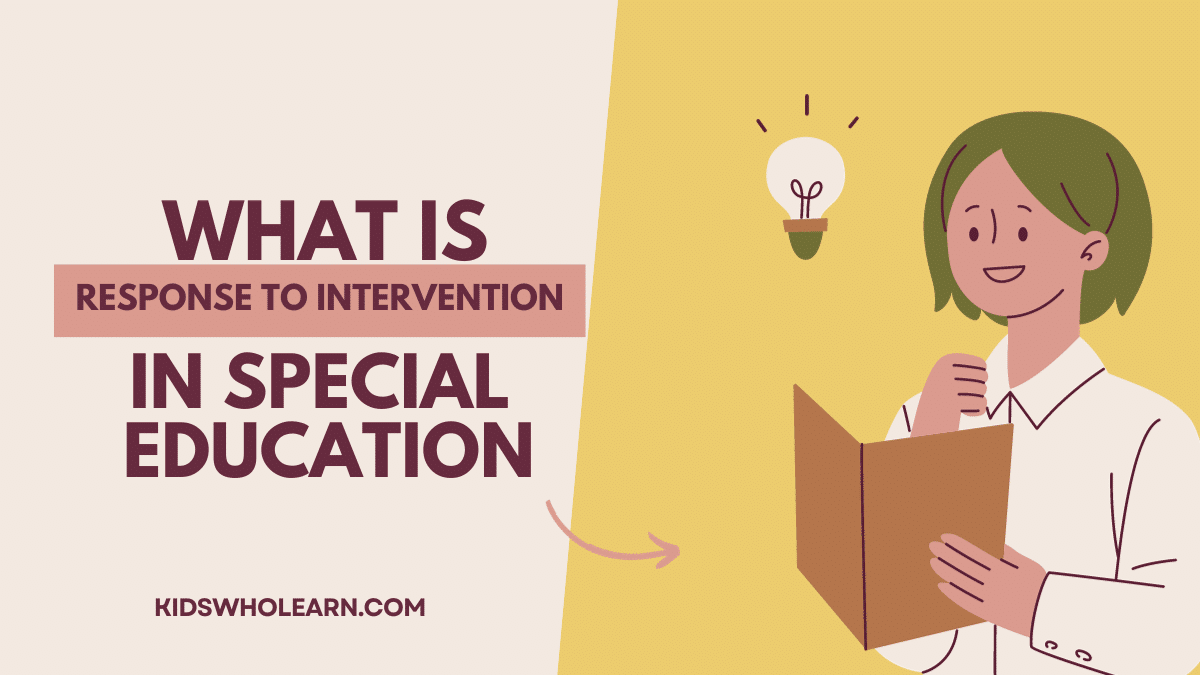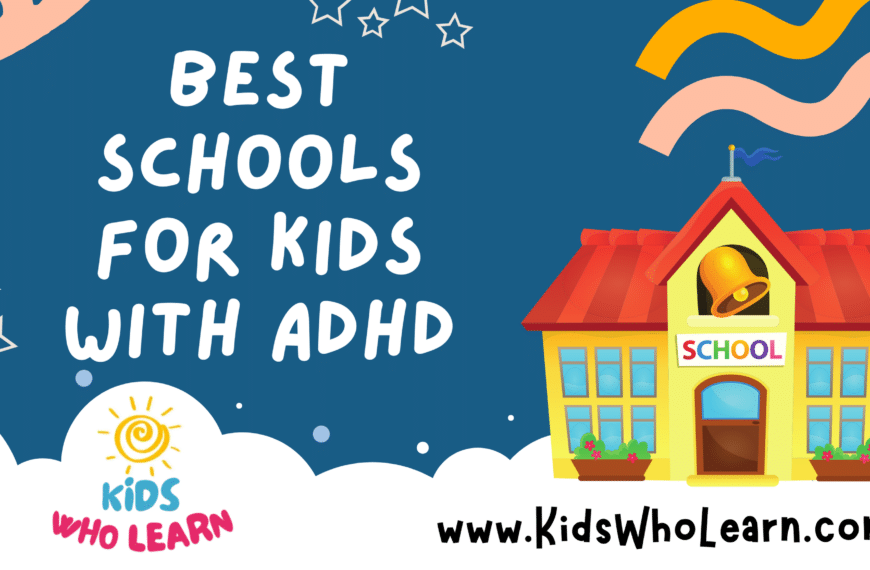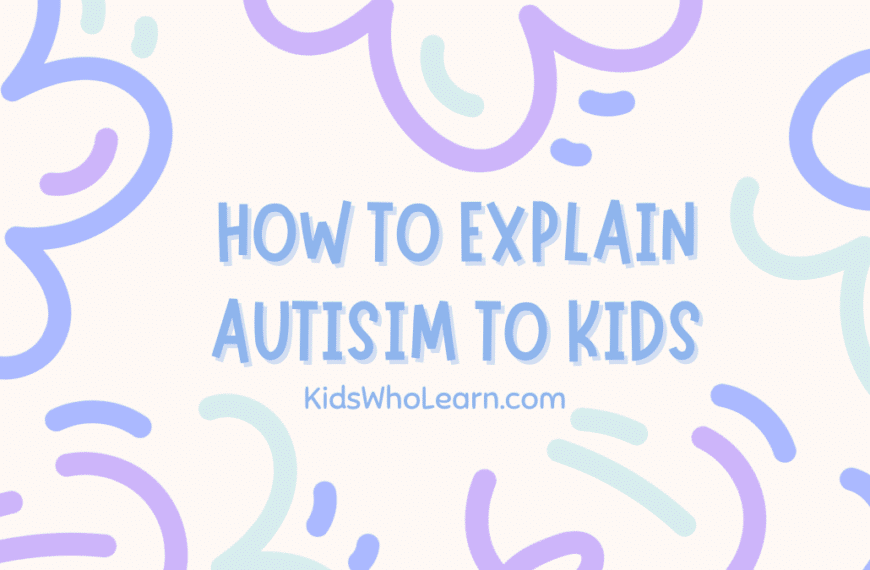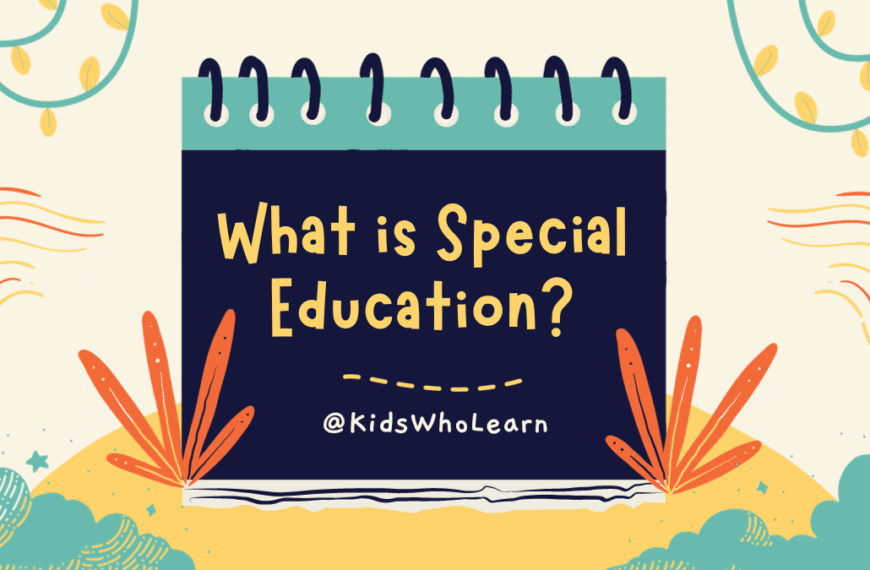If you are a parent of a child with special needs, you may have heard the term “RTI” used in discussions about their education. RTI stands for “Response to Intervention” and is a framework used in special education to identify and support students who may be struggling academically or behaviorally. In this article, we will explain what RTI is, why it is important, and how it is implemented in special education.
Understanding RTI in special education is crucial to providing effective support to students with diverse learning needs. The RTI process involves identifying students who may be at risk of falling behind their peers, providing them with targeted interventions, and monitoring their progress to ensure they are making academic and behavioral gains. By using data-driven strategies to identify and address students’ needs, educators can provide the right level of support to help them succeed.
Key Takeaways
- Response to Intervention (RTI) is a framework used in special education to identify and support students who may be struggling academically or behaviorally.
- The RTI process involves identifying at-risk students, providing targeted interventions, and monitoring progress to ensure academic and behavioral gains.
- By using data-driven strategies to address student needs, educators can provide effective support to help students succeed.
Understanding RTI in Special Education
When it comes to special education, RTI stands for “Response to Intervention.” This approach is used to identify and support students who may be struggling with learning or behavior challenges, and it is designed to help them succeed academically and socially.
The main goal of RTI is to provide early and effective interventions to students who may be at risk of falling behind or experiencing other difficulties. This is done through a three-tiered approach that includes universal screening, targeted interventions, and intensive support.
In the first tier, all students are screened to identify those who may need additional support. This may involve assessments of academic skills, behavior, or other areas of concern. Based on the results, some students may be identified for targeted interventions in the second tier.
These interventions are designed to address specific areas of need and may involve individual or small-group instruction, behavioral support, or other strategies. If a student continues to struggle, they may be referred to the third tier for more intensive support.
Overall, the RTI approach is designed to be flexible and responsive to the needs of individual students. It emphasizes early identification and intervention, ongoing progress monitoring, and collaboration between educators, parents, and other stakeholders. By using this approach, schools can help ensure that all students have the support they need to reach their full potential.
The Importance of RTI
When it comes to special education, Response to Intervention (RTI) is a crucial component that can help identify and support students who are struggling academically or behaviorally. RTI, or Response to Intervention with a focus on Literacy, is an approach that specifically targets reading and writing skills. Here are some reasons why RTI is important:
- Early intervention: One of the key benefits of RTI is that it allows educators to identify struggling readers early on and provide targeted support before they fall too far behind. This can help prevent more serious academic and behavioral issues down the line.
- Personalized instruction: RTI is designed to be flexible and responsive to individual student needs. By using ongoing assessments to monitor progress and adjust instruction accordingly, educators can provide personalized support that meets each student’s unique needs.
- Evidence-based practices: RTI is based on research-backed practices and strategies that have been shown to be effective in improving literacy skills. This means that educators can have confidence that they are using proven methods to support their students.
- Collaboration and teamwork: RTI requires collaboration between educators, parents, and other professionals involved in a student’s education. By working together, everyone can ensure that the student receives the support they need to succeed.
Overall, RTI is an important tool for supporting struggling readers and ensuring that all students have access to high-quality literacy instruction. By implementing this approach, educators can help students build the foundational skills they need to succeed academically and in life.
The Process of RTI
When a student is struggling to learn, educators may implement a Response to Intervention (RTI) approach to provide support and monitor progress. RTI is a multi-tiered approach that involves increasing levels of support for students based on their individual needs. The process of RTI typically involves three tiers:
Tier 1: Universal Interventions
The first tier of RTI involves providing all students with high-quality instruction and support. This may include evidence-based practices such as differentiated instruction, small group instruction, and frequent progress monitoring. Educators collect data on student progress and use it to inform instruction and identify students who may need additional support.
Tier 2: Targeted Interventions
Students who are not making sufficient progress in Tier 1 may receive targeted interventions in Tier 2. These interventions are more intensive and tailored to the individual needs of the student. Educators may use small group instruction, one-on-one instruction, or evidence-based intervention programs to provide additional support. Data is collected to monitor progress and determine if the interventions are effective.
Tier 3: Intensive Interventions
Students who continue to struggle in Tier 2 may receive even more intensive interventions in Tier 3. These interventions are highly individualized and may involve one-on-one instruction, specialized programs, or additional support from specialists such as speech and language therapists or occupational therapists. Data is collected to monitor progress and determine if additional interventions or services are needed.
Overall, the process of RTI involves a systematic approach to providing support and monitoring progress for students who are struggling to learn. By using evidence-based practices and collecting data to inform instruction, educators can help ensure that all students have the opportunity to succeed.
Key Components of RTI
When it comes to special education, Response to Intervention (RTI) is a commonly used approach to identify and support students who may be struggling academically or behaviorally. RTI involves a multi-tiered system of support that is designed to help students succeed in school. Here are some key components of RTI:
Tiered Instruction
One of the key components of RTI is tiered instruction. This means that instruction is provided at different levels of intensity, depending on the needs of the student. Tier 1 instruction is the core curriculum that is provided to all students. Tier 2 instruction is provided to students who need additional support, and Tier 3 instruction is provided to students who need the most intensive support.
Data-Based Decision Making
Another important component of RTI is data-based decision making. This means that decisions about a student’s instruction and support are based on data that is collected on an ongoing basis. This data can include information about a student’s academic performance, behavior, and other factors that may be impacting their success in school.
Progress Monitoring
Progress monitoring is another key component of RTI. This involves regularly assessing a student’s progress to determine if they are making adequate progress towards their goals. If a student is not making adequate progress, changes can be made to their instruction and support to help them succeed.
Evidence-Based Interventions
Interventions that are used in RTI must be evidence-based, meaning that they have been shown to be effective through research. Evidence-based interventions are selected based on the needs of the student and are implemented with fidelity to ensure that they are being used correctly.
Collaboration
Collaboration is another important component of RTI. Teachers, parents, and other professionals work together to ensure that students are receiving the support that they need to succeed. This collaboration can involve regular meetings to discuss a student’s progress and to make decisions about their instruction and support.
Overall, RTI is a comprehensive approach to supporting students in special education. By providing tiered instruction, using data-based decision making, progress monitoring, evidence-based interventions, and collaboration, students can receive the support that they need to succeed in school.
Benefits of RTI in Special Education
When it comes to special education, Response to Intervention (RTI) is a popular approach used to help students who are struggling academically. RTI is a multi-tiered system of support that provides targeted interventions to students based on their individual needs. Here are some of the benefits of using RTI in special education:
1. Early Intervention
One of the main benefits of RTI is that it allows for early intervention. By identifying struggling students and providing targeted interventions early on, educators can prevent academic difficulties from becoming more severe. This can help students stay on track academically and prevent them from falling behind.
2. Individualized Support
RTI is designed to provide individualized support to students based on their unique needs. This means that educators can tailor interventions to meet the specific needs of each student. This can be especially beneficial for students with disabilities who may require more specialized support.
3. Evidence-Based Interventions
RTI is based on the use of evidence-based interventions. This means that the interventions used have been proven to be effective through research and data analysis. By using evidence-based interventions, educators can ensure that they are providing the most effective support to their students.
4. Data-Driven Decision Making
RTI is a data-driven approach to special education. This means that educators collect data on student progress and use that data to make decisions about interventions. By using data to inform decision making, educators can ensure that interventions are effective and that students are making progress.
5. Collaboration
RTI is a collaborative approach to special education. Educators work together to identify struggling students, develop interventions, and monitor progress. This collaboration can help ensure that students receive the support they need to be successful.
Overall, RTI is a valuable approach to special education that can provide targeted interventions to struggling students. By providing early intervention, individualized support, evidence-based interventions, data-driven decision making, and collaboration, educators can help ensure that all students have the opportunity to succeed academically.
Challenges in Implementing RTI
Implementing Response to Intervention (RTI) in special education can be challenging. While the goal of RTI is to provide early and effective interventions to students who are struggling academically, there are several challenges that must be addressed in order to successfully implement this approach.
One of the main challenges is identifying students who are at risk. This requires ongoing data collection and analysis to determine which students are falling behind and in need of additional support. It can be difficult to accurately identify these students, as there are many factors that can contribute to academic struggles.
Another challenge is providing effective interventions that are tailored to each student’s needs. This requires a deep understanding of each student’s strengths and weaknesses, as well as knowledge of evidence-based interventions that have been shown to be effective. It can be difficult to find the time and resources to provide these interventions, especially in schools with limited funding and staffing.
Another challenge is ensuring that interventions are implemented with fidelity. This means that interventions must be delivered consistently and as intended in order to be effective. It can be difficult to ensure that all teachers and staff members are implementing interventions with fidelity, especially if they are not trained or supported adequately.
Finally, there is a challenge in evaluating the effectiveness of interventions. This requires ongoing data collection and analysis to determine whether interventions are having the desired effect. It can be difficult to accurately measure the effectiveness of interventions, as there are many factors that can influence student outcomes.
Overall, implementing RTI in special education requires careful planning, ongoing data collection and analysis, and a commitment to providing effective interventions to all students who need them. While there are many challenges to overcome, with the right support and resources, it is possible to successfully implement this approach and improve outcomes for all students.
RTI Strategies for Special Education
When it comes to special education, it’s important to have a variety of strategies to support students who may need extra help. One such strategy is Response to Intervention (RTI), which focuses on providing targeted interventions to students who are struggling academically or behaviorally. Here are some RTI strategies you can use in special education:
1. Universal Design for Learning (UDL)
UDL is a framework that helps teachers create inclusive classrooms that meet the needs of all students. UDL involves providing multiple means of representation, expression, and engagement to support diverse learners. By using UDL, you can help students access and participate in the curriculum in ways that work for them.
2. Differentiated Instruction
Differentiated instruction involves tailoring instruction to meet the needs of individual students. This can include modifying assignments, providing extra support, or offering enrichment activities. By differentiating instruction, you can help students work at their own pace and level, which can improve their engagement and motivation.
3. Positive Behavioral Interventions and Supports (PBIS)
PBIS is a framework that helps schools create a positive and supportive environment for all students. PBIS involves teaching and reinforcing positive behaviors, as well as providing interventions for students who are struggling with behavior. By using PBIS, you can create a safe and supportive classroom environment that promotes positive behavior and academic success.
4. Assistive Technology
Assistive technology can help students with disabilities access the curriculum and participate in classroom activities. This can include tools like text-to-speech software, speech-to-text software, or adaptive devices. By using assistive technology, you can help students overcome barriers to learning and participate more fully in the classroom.
These are just a few examples of RTI strategies you can use in special education. By using a variety of strategies and interventions, you can support the diverse needs of your students and help them achieve academic and behavioral success.
Case Studies of RTI in Special Education
RTI, or Response to Intervention, is a framework that aims to identify and support struggling learners. In special education, RTI is an important tool that helps teachers differentiate instruction and provide targeted support to students with disabilities. Here are some case studies that illustrate the impact of RTI in special education classrooms:
Case Study 1: Sarah
Sarah is a 10-year-old student with dyslexia. She struggles with reading and often feels frustrated in the classroom. Her teacher, Ms. Johnson, implemented an RTI framework to support Sarah’s learning. Ms. Johnson used a variety of interventions, including:
- Providing Sarah with audiobooks to help her access grade-level texts
- Using graphic organizers to help Sarah organize her thoughts when writing
- Giving Sarah extra time to complete assignments
After a few months of targeted support, Sarah’s reading skills improved significantly. She was able to read more fluently and with greater comprehension. Sarah also felt more confident in the classroom and was better able to participate in class discussions.
Case Study 2: Michael
Michael is a 7-year-old student with autism. He struggles with social interactions and often has difficulty communicating his needs and wants. Michael’s teacher, Ms. Lee, implemented an RTI framework to support Michael’s social and emotional development. Ms. Lee used a variety of interventions, including:
- Teaching Michael social skills through role-playing and modeling
- Providing Michael with a visual schedule to help him understand the daily routine
- Using a sensory bin to help Michael regulate his emotions
After a few months of targeted support, Michael’s social skills improved significantly. He was better able to communicate his needs and wants, and he was able to interact more successfully with his peers. Michael also felt more comfortable in the classroom and was better able to regulate his emotions.
Case Study 3: Javier
Javier is a 12-year-old student with ADHD. He struggles with attention and often has difficulty staying focused in the classroom. Javier’s teacher, Mr. Rodriguez, implemented an RTI framework to support Javier’s learning. Mr. Rodriguez used a variety of interventions, including:
- Providing Javier with a fidget toy to help him stay focused
- Breaking tasks into smaller chunks to help Javier stay on task
- Using positive reinforcement to help Javier stay motivated
After a few months of targeted support, Javier’s attention and focus improved significantly. He was better able to stay on task and complete assignments. Javier also felt more confident in the classroom and was better able to participate in class discussions.
Conclusion and Future Directions
Now that you have a better understanding of what RTI is in special education, it is important to consider the future directions of this approach. As more research is conducted, we will likely see continued improvements in the effectiveness of RTI interventions for students with disabilities.
One potential future direction is the use of technology to enhance RTI instruction. For example, virtual reality simulations could be used to provide students with realistic scenarios for practicing social and emotional skills. Additionally, online platforms and apps could be used to provide students with personalized instruction and feedback.
Another potential direction is the integration of RTI strategies into general education classrooms. By incorporating these strategies into daily instruction, all students can benefit from the development of social and emotional skills. This could lead to a more inclusive and supportive learning environment for all students.
Overall, the future of RTI in special education looks promising. As educators continue to implement and refine these strategies, we can expect to see positive outcomes for students with disabilities.
Frequently Asked Questions
What is the purpose of Response to Intervention in special education?
Response to Intervention (RTI) is a framework used in special education to identify and support students who are struggling academically or behaviorally. The goal of RTI is to provide early and effective interventions to prevent academic failure and promote success for all students.
What are some examples of Response to Intervention interventions?
Interventions used in RTI can include a variety of strategies such as small group instruction, one-on-one tutoring, and the use of technology-based programs. The interventions are tailored to meet the specific needs of each student and are designed to help them make progress in the areas where they are struggling.
What are the tiers of Response to Intervention in special education?
RTI is typically organized into three tiers. Tier 1 includes high-quality, evidence-based instruction provided to all students in the general education classroom. Tier 2 includes targeted interventions for students who are not making adequate progress in Tier 1. Tier 3 includes intensive interventions for students who continue to struggle despite Tier 1 and Tier 2 interventions.
What is the difference between Response to Intervention and an IEP?
An Individualized Education Program (IEP) is a legal document that outlines the individualized supports and services a student with a disability is entitled to receive. RTI is a framework used to identify and support struggling students, including those who may eventually be identified as having a disability. While both RTI and IEPs are designed to support students with academic or behavioral needs, they serve different purposes and are used at different stages of the special education process.
How does Response to Intervention relate to LRE in special education?
The Least Restrictive Environment (LRE) is a legal requirement that students with disabilities be educated in settings that are as inclusive as possible. RTI is one way that schools can identify and support struggling students before considering more restrictive placements. By providing early and effective interventions through RTI, schools can help students make progress in the general education setting and avoid more restrictive placements.
What is the meaning of RTI in the context of special education?
RTI stands for “Response to Intervention and Learning Disabilities” and is a framework used to support students with learning disabilities. RTI is based on the RTI framework and includes additional components such as progress monitoring and data-based decision-making to support students with learning disabilities.







